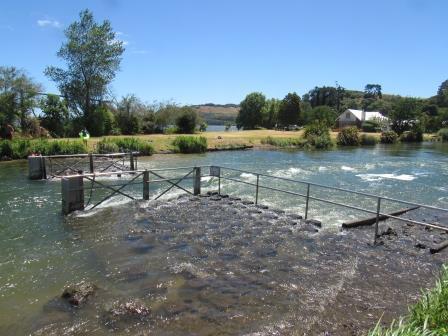What is being done for Lake Rotorua
Signup for
Updates >
Land Use Solutions
Rotorua Land Use Directory – Tahuri Whenua
Above, from left to right, Ngati Whakaue kaumatua Wiremu Keepa, Te Arawa Lakes Trust Deputy Chair Lana Ngawhika, co-author Tatiana Kiwi-Knight, Te Arawa Primary Sector Chair Dr Tanira Kingi, Bay of Plenty Regional Council Fund Manager Anna Grayling, Deputy Mayor Dave Donaldson, Bay of Plenty Regional Council Chair Doug Leeder and co-author Bill Young were among those present for the launch on Monday 4th December at GHA Centre.
Funding granted: $192,692
Project managers: Te Arawa Primary Sector, Inc. – Bill Young and Tatiana Kiwi-Knight
Project description: The Rotorua Land Use Directory – Tahuri Whenua is a guide to help land users in the Lake Rotorua catchment evaluate other land use options that may be available to them. The directory explores land uses options including Manuka, feijoa, ginseng and more. The directory has been published as a website (https://landusenz.org.nz/) and as a book which is freely available at Bay of Plenty Regional Council offices and local Rotorua libraries. The book is also available as a pdf that can be downloaded here
Te Arawa Primary Sector (TAPS) is a collective of Māori owned land trusts who own or administer over 30,000 hectares of land utilised within the primary sector (agriculture, horticulture, forestry and geothermal).
Good Nutrient Management Practice Videos
Funding granted: $47,000
Project managers: Landconnect Ltd with support from the Lake Rotorua Primary Producers Collective and Ballance.
Project description: Farmers in and around the Lake Rotorua catchment feature in the videos providing advice to other farmers about good nutrient management practice. Each video is supplemented with supporting information to help farmers decide if a particular nutrient practice will work within their farm system The main objective is to reduce nutrients entering Lake Rotorua although the videos may appeal to a wider audience.
The first video in the series is "Understanding Nutrient Cycles":
See links below to watch the other videos in the series:
- Effluent Management
- Chicory as Fodder Crop
- Optimising Sheep and Beef Stocking Rate and Type
- Using a feed pad to stand off stock
- Good Fertiliser Practices
- Reducing Phosphorus Losses
- Using Nitrogen Efficiently
- Importing Maize to Reduce Nitrogen Leaching
- Nutrient Management Plans
For more information on this project, visit the Lake Rotorua Primary Producers Collective website www.rotoruafarmers.org.nz/gmp
dNITRO Website – Land Use Change Tool
Funding granted: $136,900
Project managers: Toitu Te Waonui Ltd– Andy Dick and Ra Cleave
Project description: dNITRO is a user-friendly, spatial tool available on the internet that allows land owners in the Lake Rotorua catchment a first reference point to understand the economic gains from land use change to pine or Mānuka specific to their property.
Toitu Te Waonui is a Māori forestry initiative group comprising Interpine Innovation, and Tuia Group as well as highly regarded individuals.
See www.dnitro.co.nz
The Mānuka and Kānuka Plantation Guide
There is a strong interest across New Zealand in growing Mānuka and Kānuka, and for the Rotorua catchment, it’s an appealing low nitrogen loss land use solution.
The Mānuka & Kānuka Plantation Guide is a tool that has been released through combined funding from several Regional Councils. It provides information on the plants themselves, honey production, oil production, environmental and agricultural benefits, establishing plantations and long term management.
This guide was not funded under the Low Nitrogen Land Use Fund however it may provide further information in support of findings realised through the dNITRO land use tool.








